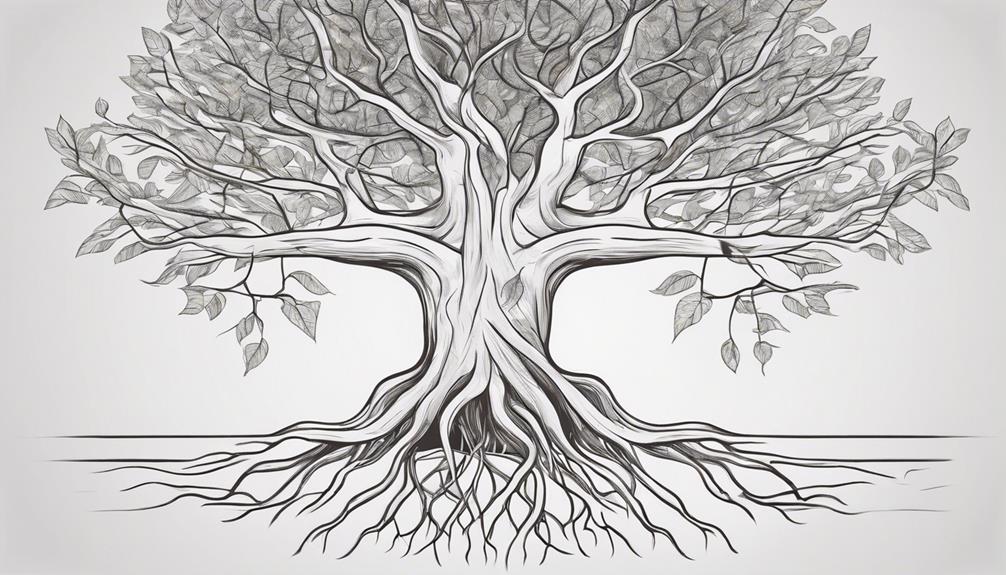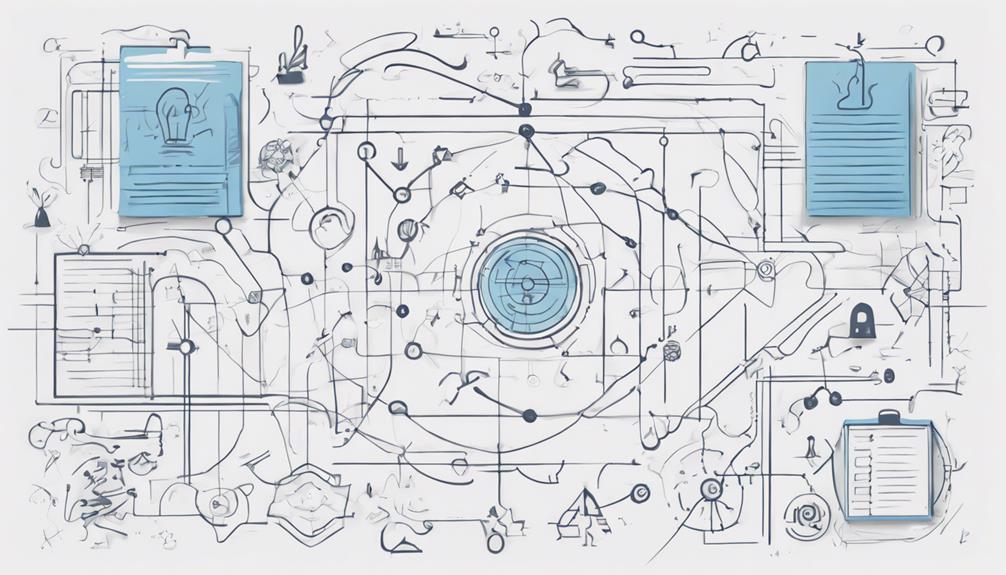Ready to turbocharge your personal growth? Start by uncovering your values, dreams, and strengths. Craft SMART goals and manage your time effectively. Immerse yourself in self-improvement resources like podcasts and online courses. Take small, consistent actions to push yourself out of the comfort zone. Set milestones, track progress, and celebrate wins. Identify strengths to harness and weaknesses to improve. Ensure every step aligns with your long-term ambitions. Regularly review and adapt your plan to stay on course. Are you enthusiastic to learn more about creating a rock-solid self-improvement plan that will propel you towards your goals?
Key Takeaways
- Define clear, specific goals aligned with long-term aspirations.
- Utilize SMART criteria for goal setting and progress tracking.
- Identify strengths to leverage and weaknesses to improve.
- Establish a structured action plan with milestones and timelines.
- Regularly review, adapt, and celebrate progress for motivation.
Self-Discovery and Goal Setting
To begin your self-improvement journey effectively, you must first engage in self-discovery and establish clear, SMART goals. Self-discovery involves delving into your values, passions, and aspirations, revealing what truly drives you. By understanding yourself on a deeper level, you lay a strong foundation for personal growth.
Next, goal setting comes into play. Setting SMART goals – Specific, Measurable, Achievable, Relevant, Time-bound – provides a roadmap for your journey. These goals act as milestones, keeping you focused and motivated along the way. They give your personal growth plan structure and direction, guiding you towards a purposeful life.
Through self-discovery and goal setting, you define your dreams and aspirations, paving the way for a more fulfilling existence. Embrace this process wholeheartedly, for it's the key to accessing your full potential and living a life rich with meaning and accomplishment.
Organizing Life and Priorities

Hey there, ready to take charge of your life? Let's chat about organizing your life and priorities.
We'll cover techniques to manage priorities effectively and how to structure your daily routines for success.
Get ready to supercharge your productivity and reach your goals!
Priority Management Techniques
When organizing your life and priorities, it's vital to implement effective priority management techniques. Setting clear goals helps in defining what matters most to you.
Prioritizing tasks using tools like the Eisenhower Matrix can assist in determining urgent and important activities. Remember the 80/20 rule; focus on the critical 20% that yields 80% of the results.
Time management is key; try time-blocking to allocate specific time slots for different tasks and maintain a structured schedule. Engage in single-tasking to boost focus and productivity by concentrating on one task at a time.
Don't forget about delegation; identify tasks that can be outsourced or shared to free up your time. By incorporating these techniques into your routine, you can effectively manage your priorities, enhance productivity, and work towards achieving your goals with a more organized approach.
Structuring Daily Routines
Structuring your daily routines plays a key role in organizing your life and priorities effectively. By implementing a well-organized routine, you can experience increased productivity, achieve long-term goals, and have a sense of stability and control in your daily life. Here are five key benefits of organizing your daily activities:
- Reduced Stress: Creating a routine can help reduce stress by providing a clear plan for the day.
- Improved Productivity: Prioritizing tasks within a structured routine leads to better time management, ultimately boosting productivity.
- Long-Term Goal Achievement: Organizing daily activities can significantly contribute to effectively achieving your long-term goals.
- Sense of Stability: A well-structured routine offers a sense of stability in an otherwise chaotic world.
- Enhanced Time Management: Effective time management is a natural byproduct of a well-organized routine, allowing you to make the most of your day.
Utilizing Self-Improvement Resources

Ready to turbocharge your self-improvement journey? Let's chat about how to make the most of self-improvement resources.
From motivational podcasts to insightful blogs, these tools are like a personal growth buffet waiting for you to dig in!
Diverse Inspirational Content
Exploring a range of self-improvement resources like books, podcasts, Ted Talks, and blog posts can provide diverse and valuable insights to inspire and guide your personal growth journey. Engaging with a mix of motivational content from diverse sources is like having a personalized toolkit for your self-improvement journey.
Here are five compelling reasons why diverse inspirational content is key to your growth:
- Different perspectives cater to your specific goals and aspirations.
- Varied insights keep you motivated and committed.
- Access to valuable content aligns with your personal growth plan.
- Continuous learning and growth are facilitated by immersion in such resources.
- Evolving towards your desired outcomes becomes more achievable with a diverse range of materials.
Accessing Valuable Platforms
Accessing valuable platforms for self-improvement involves utilizing a diverse array of resources like online courses, podcasts, YouTube channels, blogs, and social media communities to enhance your personal development journey.
When seeking courses, platforms like Coursera, Udemy, and Skillshare offer a plethora of options tailored to various aspects of personal development.
Plunge into podcasts such as 'The Tim Ferriss Show' or 'The Tony Robbins Podcast' for valuable insights and strategies from top experts in the field.
YouTube channels like 'Impact Theory' and 'TED Talks' present inspiring talks and interviews that can spark new ideas and perspectives on self-improvement.
For those who prefer reading, blogs like 'Tiny Buddha' and 'Lifehack' provide practical tips and advice to support your growth journey.
Additionally, don't underestimate the power of social media platforms like Instagram and LinkedIn, where communities and influencers share motivational content and strategies for self-improvement.
Taking Action for Personal Growth

Consistently implementing your self-improvement plan is necessary for taking action towards personal growth. To make progress and achieve personal transformation, it's essential to commit to daily actions that align with your growth plan.
Here are five key points to keep in mind:
- Small Daily Actions: Engaging in small, manageable tasks each day can lead to significant improvements over time.
- Commitment to Progress: Dedicate yourself to the journey of personal growth by staying committed to your self-improvement plan.
- Dedication to Growth: Your willingness to put in the effort and dedication required for personal growth is crucial.
- Stepping Outside Your Comfort Zone: Embrace challenges and be open to stepping outside your comfort zone for growth.
- Seeing Tangible Results: By consistently following your growth plan, you can witness tangible results and experience personal transformation firsthand.
Understanding Growth Plans

Understanding growth plans involves creating a personalized blueprint that outlines steps for self-improvement based on your individual aspirations and values. This growth plan serves as your roadmap to align actions with goals, track progress effectively, and ultimately achieve personal and professional success.
By setting specific goals that are measurable, achievable, relevant, and time-bound, you can create a clear path towards your desired growth. Continuous improvement is key, so don't forget to seek guidance from mentors, coaches, or a supportive community to enhance the effectiveness of your plan.
Remember, regular review and adaptation of your growth plan based on your progress and insights are vital. Keep in mind that your growth plan is dynamic and should evolve as you do. Stay committed to your journey, stay open to learning, and don't be afraid to make adjustments along the way.
With dedication and a well-crafted growth plan, you're well on your way to reaching new heights!
Creating Your Growth Blueprint

Crafting your growth blueprint involves developing a personalized plan that outlines specific goals, actions, milestones, timeframes, and resources for self-improvement.
To create an effective growth blueprint, consider the following:
- Set Clear Goals: Define your objectives for personal growth to give direction to your plan.
- Identify Actions: Determine the steps you need to take to achieve your goals and improve yourself.
- Establish Milestones: Break down your goals into smaller, measurable targets to track your progress.
- Leverage Strengths and Address Weaknesses: Recognize your capabilities and areas needing improvement to tailor your plan effectively.
- Align with Aspirations: Make sure that your growth blueprint aligns with your long-term aspirations to stay motivated and focused.
Reviewing and Adapting Your Plan

Regularly revisiting and adjusting your self-improvement plan is crucial for staying on track and achieving your personal growth goals. Plan reviews provide valuable insights into your progress, allowing you to make necessary adjustments to guarantee you're moving in the right direction.
Embrace obstacles as opportunities for learning and growth during these reviews; they're stepping stones toward your success. As you adapt your plan, remember to celebrate your achievements along the way. Practicing self-compassion is key to staying motivated and maintaining a positive mindset.
Stay flexible and focus on long-term growth by adjusting your plan based on both challenges and successes. Remember, personal growth is a journey, not a sprint. Don't hesitate to seek support when needed. Encouragement, advice, and accountability from others can enhance the effectiveness of your self-improvement plan.
Together, with a blend of self-reflection, self-compassion, and external support, you can navigate the path to self-improvement successfully.
Frequently Asked Questions
How to Create a Self-Improvement Plan?
To create a self-improvement plan, identify values, strengths, weaknesses, and aspirations. Set SMART goals aligned with long-term objectives. Develop a detailed plan with actionable steps and milestones. Regularly review and adapt based on progress. Seek support for accountability and motivation.
How Do I Write a Self Growth Plan?
To write a self-growth plan, start by setting specific goals aligned with your values. Create actionable steps and track progress regularly. Adjust based on insights for continuous improvement. Remember, self-reflection is key.
What Is the Good Strategy for Self Growth?
To achieve self-growth, set specific, measurable, achievable, relevant, and time-bound goals. Regular self-assessments reveal strengths and weaknesses. Seek guidance from mentors or friends for insights. Develop a detailed plan with actions, milestones, timeframes, and resources. Surround yourself with a supportive community for motivation.
What Are the 7 Steps in Creating a Pdp?
To create a Personal Development Plan (PDP), start by identifying strengths, weaknesses, opportunities, and threats. Set SMART goals, develop action plans, and review regularly for growth. Adjust based on progress and feedback to enhance your self-improvement journey.
Conclusion
To sum up, creating a self-improvement plan is like mapping out your journey to success. Just like a skilled cartographer, you need to carefully chart your course, set your goals, and navigate through life's twists and turns.
With dedication and perseverance, you can reach your destination and become the best version of yourself. So grab your compass, pack your bags, and set sail towards personal growth and fulfillment. The adventure awaits!









